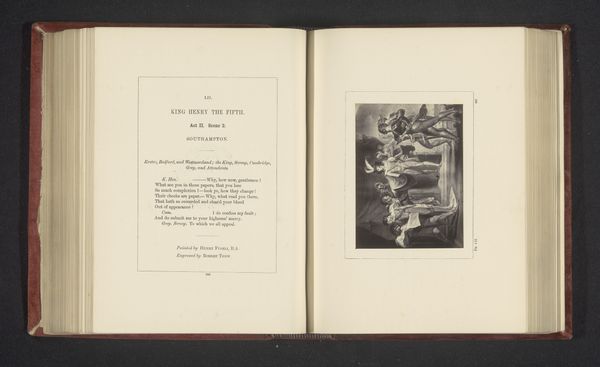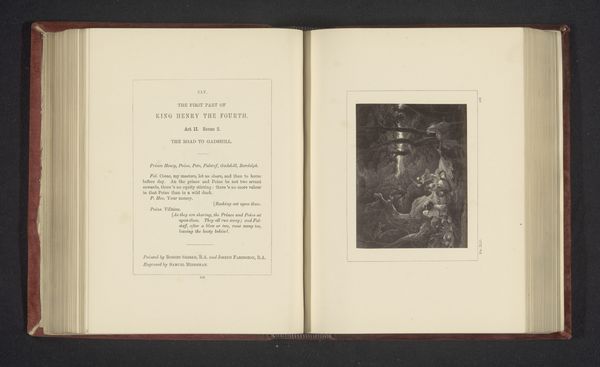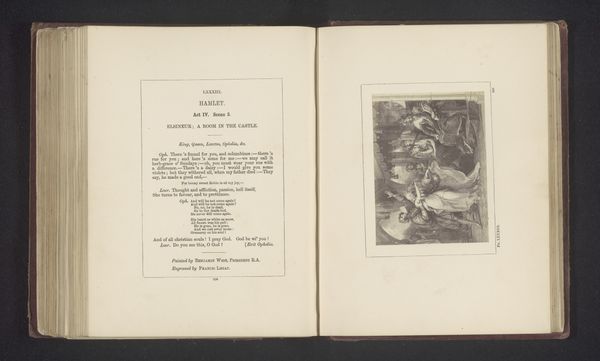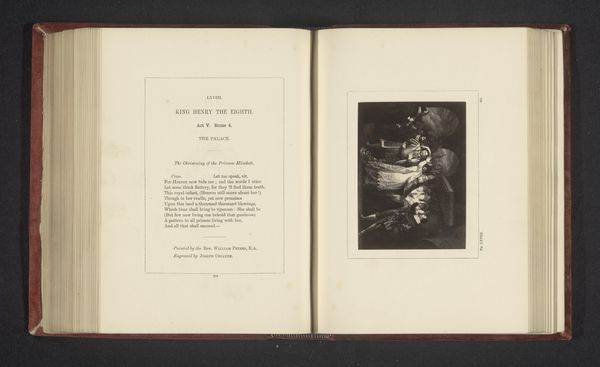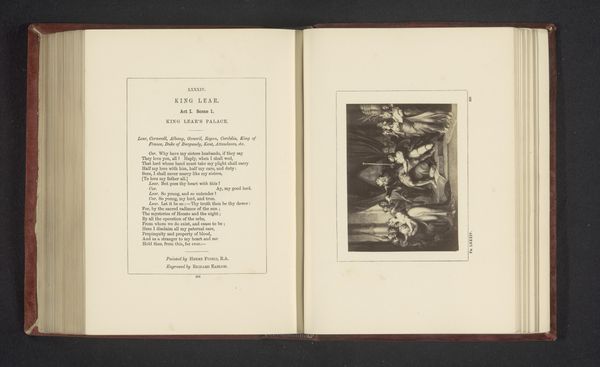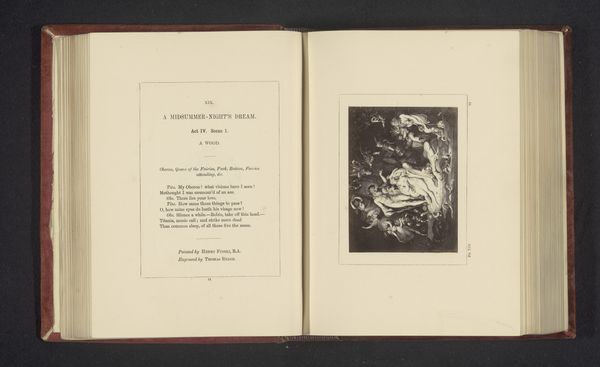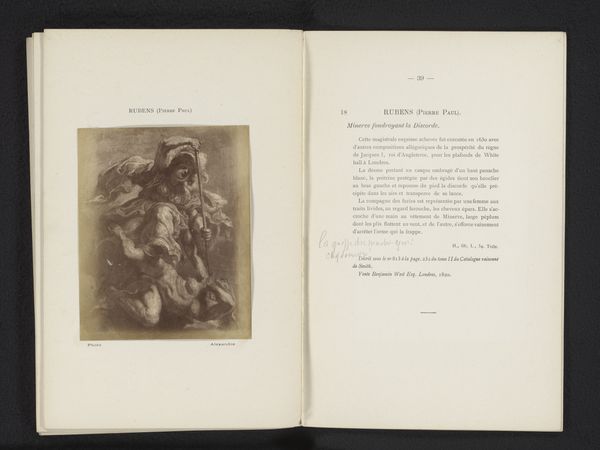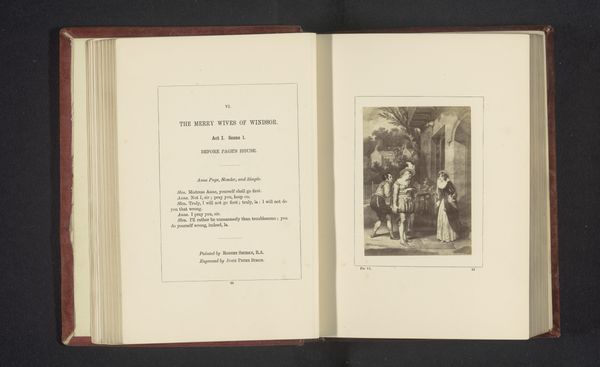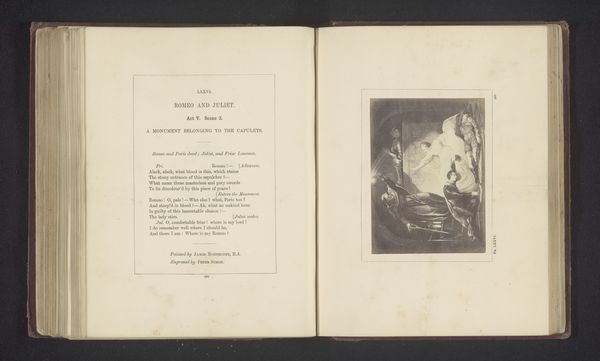
Fotoreproductie van een prent naar een schilderij door John Francis Rigaud, voorstellend een scene uit Een klucht vol verwarring door William Shakespeare before 1864
0:00
0:00
print, engraving
#
portrait
#
aged paper
# print
#
personal journal design
#
personal sketchbook
#
hand-drawn typeface
#
thick font
#
history-painting
#
handwritten font
#
delicate typography
#
academic-art
#
thin font
#
engraving
#
historical font
#
small font
Dimensions: height 71 mm, width 100 mm
Copyright: Rijks Museum: Open Domain
Editor: This is a reproduction of an engraving, before 1864, after a painting by John Francis Rigaud, illustrating a scene from Shakespeare's "Comedy of Errors." The print medium gives it a fascinating texture, and the figures seem to emerge from the shadows. How does this representation fit into the larger context of Shakespearean illustration at that time? Curator: It’s crucial to see this print as part of a larger cultural phenomenon: the popularization of Shakespeare through visual media. In the 19th century, Shakespeare wasn't just high literature; it was a source of national identity and cultural capital. Prints like this one, circulated widely, making Shakespeare accessible to a broader audience. The academic style speaks to this desire for "high" art to illustrate a figure considered a pillar of culture. Notice how Rigaud, even in reproduction, emphasizes the dramatic theatricality – isn't that striking? Editor: It is, especially given the limitations of engraving at the time. But who was the intended audience for this type of print? Were they purchasing it individually, or was it more likely part of a bound collection? Curator: Both, likely. Publishers often created these prints both as individual affordable artworks for middle-class homes, and gathered together in more lavish volumes marketed toward wealthier patrons who wished to signal their cultured tastes. The existence of these sorts of reproductions also hints at a growing museum culture: unable to afford an original painting, people bought prints. What does it tell you that Shakespeare needed pictures? Editor: It's fascinating how these images become a form of cultural currency. I see now that understanding this image requires thinking about the social and economic factors surrounding art production and consumption in 19th century Britain, and how illustration made culture more widely accessible. Curator: Exactly! It's a lens onto how art shapes and reflects our understanding of history and identity, something I'll definitely think more about in my research now!
Comments
No comments
Be the first to comment and join the conversation on the ultimate creative platform.
